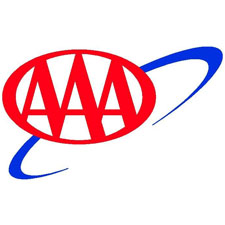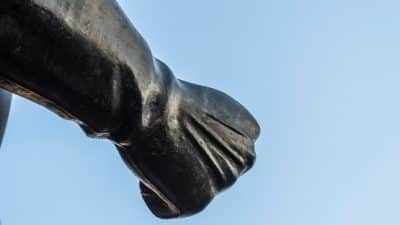
Since July 4 falls on a Wednesday, the calendar will play a role in driving holiday travel volume as the mid-week holiday expands the traditional five-day travel period to six days and provides the option of including a weekend and two week days on either side of the actual holiday.
When asked about day of departure, 54 percent of people intending to travel this holiday plan to begin their trip prior to the start of the work-week that includes July 4. Response percentages by trip departure day are:
· 25 percent – Friday, June 29
· 16 percent – Saturday, June 30
· 13 percent – Sunday, July 1
· 11 percent – Monday, July 2
· 19 percent – Tuesday, July 3
· 16 percent – Wednesday, July 4
“AAA’s projection for a decade high number of Independence Day travelers is being fed by Americans’ appetite for travel, a mid-week holiday and lower gas prices,” said Bill Sutherland, vice president, AAA Travel Services. “This is the second holiday this year where travelers indicated a determination to travel while economizing by actively seeking value-added travel options and activities.”
“A healthy travel industry is critical to the overall well-being of our economy and consistent increases in travel are encouraging,” added Sutherland.
The price of gasoline is another factor expected to play a role in spurring intentions to travel this Independence Day holiday period. On April 6, motorists experienced a year-to-date peak average price of $3.94 per gallon for regular gasoline. The current national average price of regular gasoline is $3.50 per gallon, 44 cents lower than the April peak and 15 cents less than this time last year.
Approximately 35.5 million people plan to travel by automobile setting the high-water mark for the decade, as 84 percent of all Independence Day holiday travelers choose this traditionally dominate mode of transportation. This is a four percent increase over the 34.1 million people who traveled by auto last year.
Slightly more than 3.2 million leisure travelers (eight percent of holiday travelers) will fly during the Independence Day holiday period, a nine percent increase over the 2.9 million air travelers in 2011. This year’s increase is the third consecutive year of rising Independence Day holiday air travel volume, following the decade low 1.4 million air travelers in 2009.
Airfares are flat year over year with an average lowest round-trip rate of $200 for the top 40 U.S. air routes in both 2011 and 2012, according to AAA’s Leisure Travel Index. A longer holiday period and stable airfares are spurring this increase.
The remaining 8 percent of holiday travelers are expected to use other modes of transportation, including rail, bus and cruise ship, accounting for 3.6 million travelers – a 10 percent increase over last year and the second highest volume in the past ten years.
According to AAA’s Leisure Travel Index, Independence Day holiday hotel rates for AAA Three Diamond lodgings are expected to increase four percent from a year ago with travelers spending an average of $164 per night compared to $157 last year. Travelers planning to stay at AAA Two Diamond hotels can expect to pay nine percent more at an average cost of $120 per night. Weekend daily car rental rates will average $40, a nine percent decrease from one year ago.
According to a survey of intended travelers, the average distance traveled by Americans during the Independence Day holiday weekend is expected to be 723 miles, up 150 miles from than last year’s average 573 miles. The increase in expected air travel is a factor in lifting the average travel distance as air trips typically span a longer distance than automobile trips. The survey found that the share of holiday trips in excess of 1,500 miles increased to 18 percent from last year’s 10 percent share, while the share of trips shorter than 250 miles decreased to 28 percent from 35 percent a year ago.
Median spending is expected to be $749, a seven percent decrease compared to the expected median spending of intended holiday travelers ($807) in 2011.
The Independence Day holiday traditionally involves spending time with family and friends, enjoying the outdoors and participating in celebrations highlighted by fireworks. This year’s survey of intended travelers found that the economizing travel consumer behavior reported in AAA’s Memorial Day travel forecast will continue over the Independence Day holiday period. Lower spend activities like visiting family and friends and sightseeing are expected to increase up to four percent, while shopping and entertainment will decrease by as much as nine percent.










